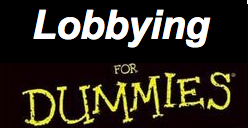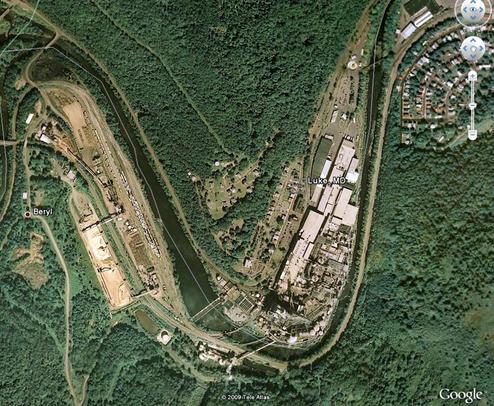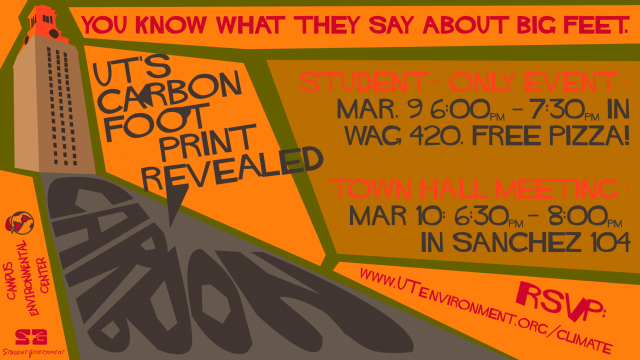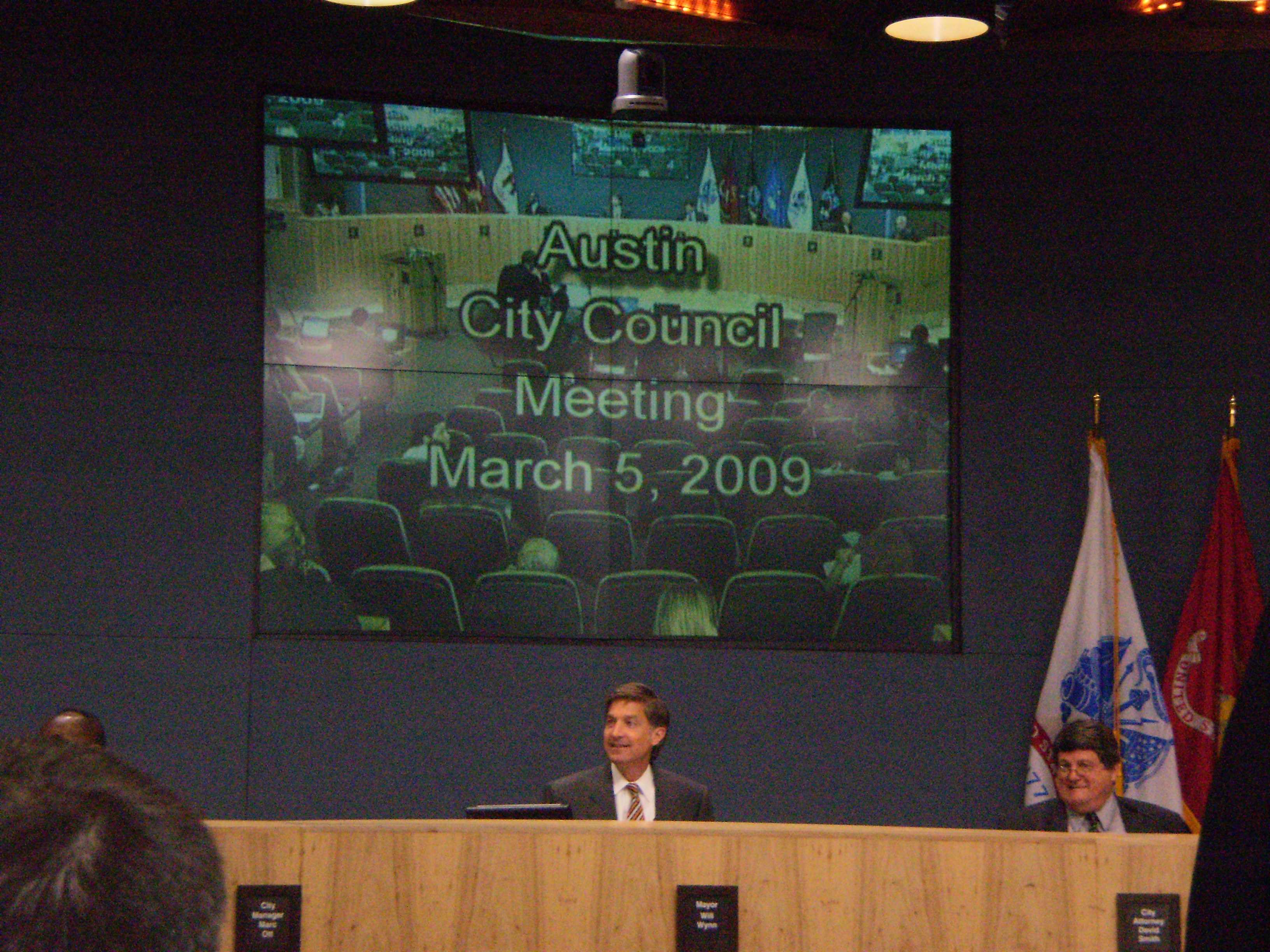
The first step towards greenhouse gas regulation is underway! On Wednesday, the EPA proposed a rule that industries measure and report their greenhouse gas emissions. The rule would apply to 13,000 facilities nationwide, including manufacturers of chemicals, oil, cement, iron and steal, automobiles, electricity generation, and more! Green Inc reports that this will cover 85%-90% of greenhouse gas emissions in the United States, and not just carbon dioxide emissions. The reports will also include emission amounts of those other things we hate to inhale, such as methane, hydrofluorcarbons, and nitrous oxide.
If put into action, emissions tracking will begin in 2010 for reports to release in 2011. Of course, this program would cost a significant amount of cash—$160 million in the first year and then $127 million each year thereafter.
The reports will allow us to pinpoint exactly how much greenhouse gas is released into the atmosphere, and from where. Though some firms are already participating in voluntary reporting, this kind of industry-wide reports will provide comparative analysis. With such detailed (and presumably accurate) information, we will also be in a better position to make informed decisions about how emission regulation should be formulated.
CNNMoney.com also reported that this information could be important to investors. For those ill-prepared companies, emission regulation could drastically affect their earnings.
Mindy Lubber, the Director of the Investor Network on Climate Risk stated:
The SEC needs to protect investors from the risks companies face from climate change, whether from direct physical impacts or new regulations. Shareholders deserve to know if their portfolio companies are well positioned to manage climate risks or whether they face potential exposure.
Public release of information would be a powerful tool to prepare companies, especially those that are energy-intensive, to be held accountable for their energy emissions. Or a good kick in the pants to take the next step to become ecologically conscious!
Posted in Consumers, Energy, Global Warming, Renewables | Tagged atmoshere, Carbon Dioxide, EPA, Global Warming, greenhouse gas emissions, regulation, reporting, SEC, Texas |
[youtube=http://www.youtube.com/watch?v=7Dfv2yoCtjU]
Ever wondered why Texas should invest in solar energy? Ever wanted it explained to you in 5 minutes in a way reminiscent of a 1940s newsreel? Or just tired of The Sham-wow Song and want a new viral video to watch?
Written, produced, and starring members of the Public Citizen Texas staff, “Wildcatting the Sun” talks about Texas’ solar potential, the green jobs that would come to Texas from investing in solar now, and how solar can replace dirty coal and expensive nuclear.
This video was produced as part of Environment Texas’s solar video contest. You can see all of the other submissions here.
Posted in Energy, Global Warming, Renewables | Tagged Austin Energy, Global Warming, green jobs, photovoltaic. distributed generation, Public Citizen, pv, renewable energy, Renewables, solar, solar power, Texas |
In the fight for a greener future, America’s youth has and is continuing to be one of the strongest forces. Recently, I participated in Powershift 2009–the largest summit on climate and energy in United States’ history. Roughly 12,000 attended the conference, and the overwhelming majority of participants were students from high schools and colleges spanning across the nation!



The conference began Friday, and provided endless opportunities for attendees to experience environmentally-geared panels, workshops, movies, speakers, and state breakouts until Sunday. The amalgamation of these informative and inspirational activities worked as a preface that ultimately led to Powershift’s climax that Monday–lobby day. Despite the untimely blizzard-like weather that stormed DC right before that Monday, thousands of youth still trudged through snow and sleet to capitol hill. That day, March 2nd, proved the be the largest lobby day for climate and energy in US history. Senators and representatives from all fifty states were successfully lobbied, with a total of 350 lobby visits! For any of you who are glad that some federal lobbying was completed for your interests, here is the platform that Powershifters presented to US senators and representatives:
1. Cut Carbon Emissions
- Reduce global warming pollution by the targets science tells us are necessary: 25%-40% below 1990 levels by 2020; and 80%-95% below 1990 levels by 2050.
- Set an aggressive cap on carbon immediately. If a cap-and-auction mechanism is chosen, 100% of pollution allowances must be auctioned. Any revenue generated from this cap must be used to address the climate crisis in a just and equitable way; none of this money should go to polluting industries.
- Conserve and restore the world’s forest, ecosystems, and carbon sinks, which are the best natural defense in a warming world.
2. Invest in a Green Economy
- Create 5 million new jobs through investments in clean energy.
- Develop a “Clean Energy Corps” to create service, training, and job opportunities in the clean energy economy (1).
- Train a generation of workers and volunteers to build our clean energy future and help communities adapt to the already changing climate.
3. Power Our Future with Clean Energy, not Dirty Fuels
- We see a future powered by clean, renewable energy like wind, solar, and geothermal; 100% of our electricity should come from these sources, and we should invest in sustainable transit and energy efficiency.
- End our dependence on dirty energy by enacting a moratorium on financing and development of new coal and nuclear plants, and oil shale and tar sands infrastructure.
- Immediately begin phasing out dirty and dangerous energy sources and methods of extraction, while also ensuring a just transition for affected workers and communities.
4. Lead the World to a Clean and Equitable Energy Future
- Work with other nations to reach a strong new global climate treaty in Copenhagen that puts us on track to reduce carbon below 350 parts per million.
- Assist vulnerable communities and developing countries in the transition to low-carbon economies and with adaptation to the changing climate.
_________________
This was the type of rhetoric left at the nation’s capitol a week ago, and such requests likely still serve as hot topic points in DC. As a voice of Powershift, and the young environmentalists of this nation, this is the direction we want to see our federal government take now, and in the future. And let me assure you, the overwhelming feeling in Washington experienced by many of the Powershifters is that this direction is highly achievable, at least, more so than ever before in our nation’s history!
(1) The UN Framework Convention on Climate Change (UNFCCC) COP15 in Copenhagen.
Posted in Coal, Global Warming, Toxics | Tagged Air Quality, carbon cap, Carbon Dioxide, Clean Energy, Clean energy corps, climate change, Coal, Congress, Department of Energy, geothermal, global climate treaty, green jobs, greenhouse gas, house of representatives, obama, powershift 09, Public Citizen, renewable energy, Renewables, senate, solar power, stimulus package, student activists, Texas, washington dc |
After a grueling 23-hour hearing, the Senate passed SB 362, requiring that voters present a photo identification. No big surprise there.
The AP reports,
No one was surprised that a special Senate panel, which includes all 31 senators and Republican Lt. Gov. David Dewhurst, approved the legislation along straight party lines in a 20-12 vote just before 10 a.m. It was, as one Democratic senator observed, a “foregone conclusion.”
Wednesday’s vote all but assures it will pass and be sent to the House as early as Monday.
Andy didn’t make it back to testify, he had to head off to Dallas before his turn came up. Lots of people didn’t make it to testify… though as many as 150 folks signed up, only around 25 made it through the night to actually speak.
I’m not sure on the official numbers of how many people dropped cards for or against the bill, but I heard through the grapevine that more people commented against it than for. Thanks to everyone who made it out — get ready to do it all over again in the House!
Reports Vince Leibowitz at Capitol Annex,
The bill is all but assured a similar party-line vote when it comes up before the full Senate as early as Monday for final passage. The bill will then go to the Texas House, where it will likely be assigned to the House Elections Committee.
Sorry my fellow Good Government watchdogs… our work is never done. And even then, who will watch the watchmen?
Posted in Good Government, Privacy | Tagged ap, Capitol Annex, david dewhurst, house elections committee, sb 362, Texas, texas house, texas senate, Vince Leibowitz, voter id, voter suppression |
It is 2am. I have been listening to the Senate debate voter ID suppression for the past 16 hours. I hope all of you have been following us on Twitter, as some of those tweets were quite entertaining.
I have heard the arguments. Here are my opinions:
Those opposed to voter ID have successfully proved that this is a solution to a problem that does not exist. Period. Years of investigations by the AG’s office costing millions of dollars and not a single indictment.
However, those who are in favor of requiring voters to present picture ID also have a compelling argument that they claim not one person has been kept from voting. But, I hate to ruin a good story with the facts, but that just ain’t so. According to the Houston Chronicle today yesterday, over 4200 voters were kept from voting in the 2008 election in Georgia alone, whose law the proposed bill is based on.
As I tweeted earlier, one of the expert witnesses claimed that based on demographics and the experience in Georgia and Indiana, 162,901 Texans would be disenfranchised.
Sounds like a big hurdle for voters to “solve” a problem that doesn’t exist.
I have to get up in 4 hours and go to Dallas. I’m beat. I’ll keep the Senate testimony on all night and let it permeate my dreams (scary, no?) Maybe by the time I wake up they will have gotten to public testimony and I can swing back by the Capitol and testify before heading to Dallas. Not bloody likely, but I can dream….
Posted in Good Government, Privacy | Tagged liveblogging, Texas, texas senate, voter, voter id |
Here’s How!
Last week we had an intern training session, and many of the tips and tricks of lobbying we learned would be helpful for anyone who would like to get involved in activism. Here are a few things to remember when planning your future as a Successful Lobbyist. 
First, always remember that lobbying is about strategy. Successful actions are rarely haphazard or random. When devising your strategy, be very clear about what it is you are trying to accomplish. Is it reasonable? Is it winnable? Is it focused? Your strategy will be the foundation for your tactics, so make sure you have it down.
Now, who can give you what you want? And to whom are they accountable? The best way to tackle this is through a strategy called Power Mapping, in which you consider the power relationships between your opposition and those who ultimately make the decisions. Once you narrow this down, you can begin to devise how you will reach those people, and how you can persuade them to take action towards your goal.
Because the point is to change or readjust the perspective of the opposing party, you must first begin to understand their motivations… Continue Reading »
Posted in Campaign Finance, Good Government | Tagged Austin, Campaign Finance, coalition, influence, lobbying, long-term goals, motivators, opposing party, perspective, power mapping, Public Citizen, strategy, successful lobbyists, tactics, Texas, Texas Legislature |
A ruptured pipeline has just spilled 4,000 gallons of toxic coal ash into the north Potomac River, reports Pete Altman at NRDC’s Switchboard blog:
The Maryland Department of the Environment just reported that a ruptured pipeline carrying wet coal ash has spilled 4,000 gallons of the toxic-laden stuff into the North Branch of the Potomac River, in Luke, MD.
I don’t know how long it’ll take for the spill to reach DC proper, but its a hell of a way to send a message about how much we need to regulate the handling of this stuff. All the more reason to thank the Obama Administration for announcing plans to propose federal regulations for coal waste.

Google Earth image of the North Branch of the Potomac and site of the spill
I hate to see this happen, but hopefully it will provide the kick in the pants Congress needs to regulate coal combustion waste. Please take this timely opportunity to visit 1Sky’s Skywriter blog and tell Congress to prevent the next coal waste disaster by passing a moratorium on new coal plants.
Posted in Coal, Global Warming, Toxics | Tagged 1Sky, coal ash, coal ash spill, coal waste, combustion waste, Congress, luke, maryland department of the environment, md, north potomac, nrdc, Obama administration, pete altman, Potomac River, Skywriter blog, switchboard blog, Texas, toxic ash, washington dc |
This just in from the Associated Press:
WASHINGTON – Author and activist Van Jones will be a special adviser for green jobs, enterprise and innovation in the Obama administration.
Nancy Sutley, chairwoman of the White House Council on Environmental Quality, said in a release Monday that Jones will start work next week to help direct the administration’s efforts to create jobs and help the environment. Sutley said Jones will work on “vulnerable communities.”
Jones founded Green for All, a national organization that promises environmentally friendly jobs to help lift people out of poverty. He wrote the New York Times best-seller “The Green Collar Economy.”
Anyone who heard Van Jones’ keynote address at our Texas Energy Future conference knows what fantastic news it is that this man now has the ear of the President and the White House Council on Environmental Quality. At the conference Van Jones gave an amazing speech to a packed house on the potential of the new green economy. For a taste of the kind of green jobs messaging the Obama Administration will hear from now on, check out this trailer — courtesy of Texas Impact.
[youtube=http://www.youtube.com/watch?v=nvGRWZDShPc]
For the full speech, check out the streaming google video after the jump. Continue Reading »
Posted in Consumers, Efficiency, Global Warming | Tagged ap, bush administration, dina cappiello, Energy Efficiency, green economy, green jobs, Obama administration, Public Citizen, solar, special advisor, Texas, texas energy future, Texas Impact, van jones, white house council on environmental quality, wind |
This Tuesday, March 10th starting at 9 am the entire Texas Senate will hold a massive hearing on SB 362, a voter suppression bill that would require voters to show multiple forms of photo identification in order to vote at the polls.
Don’t think having to show ID to vote sounds that bad? Think about how much more difficult it might be to keep current identification if you were elderly, or disabled, or homeless even. Or what about low-income individuals… if you had to use public transportation to get around and worked multiple jobs, how much more difficult would that trip to DPS become? What if you were a woman who had just gotten married, and still had a driver’s license with your old last name on it? Or were a student with an out-of-state license, or had moved to Texas recently? What if you had lived in Texas your whole life, but a hurricane hit your hometown just before the election — as happened with Hurricane Ike this fall. Didn’t think to grab your ID and several bills to prove who you were? Too bad, can’t vote.
Starting to sound like a problem, isn’t it? Studies show that this bill has the potential to disenfranchise as many as 2 million Texans.
Good thing there’s still time to do something about it.
You know the gig by now. Contact your Senator! Call, email or fax your Senator and tell them you are opposed to Voter Suppression Legislation, specifically SB 362 by Fraser and Estes. Don’t know who represents you? Problem solved.
Still mad? If you’re in Austin and have some free time tomorrow, you can do even more. Attend the hearing and register your opposition to the bill, testify if you can. There will also be a gathering at 10 a.m. on the south steps of the capitol of those in favor of the bill, which you are invited to attend with signs of your own voicing the opposite opinion.
More advice and details on action you can take after the jump, courtesy of Laurie Vanhoose, administrator of the Texans Against Voter Suppression Facebook group. Join it today, and contact your representatives about this reprehensible piece of legislation! The rest of this post is lifted from an action e-mail she sent out Monday evening.
Continue Reading »
Posted in Global Warming | Tagged committee hearing, facebook, laurie vanhoose, Texas, texas state senate, voter id, voter suppression |

The House Technology, Economic Development and Workforce Committee met today to discuss HB 516, a bill to establish and fund a green job skills training program under the Texas Workforce Commission. Representative Mark Strama (D-Austin) authored the bill, which specifies green jobs as being “jobs in the field of renewable energy or energy efficiency.” These include jobs in energy efficient building, construction, and retrofitting, renewable electric power, biofuels, deconstruction and reuse of materials, energy efficiency assessments, manufacturing of sustainable products, and manufacturing using sustainable processes and materials. Considering the fact that Texas unemployment rate has hit a 19-year high and is home to an increasingly environmentally-conscious public, creating green jobs simply makes sense. Austin City Council’s recent approval and the public’s support of the Webberville solar plant shows that there is local a push for a greener economy. The fact that $43 billion of the recently passed stimulus package is slated towards energy, especially green energy, speaks volumes about what direction the country would like to go towards its use of energy. If the bill does pass, federal funding will be the principal source of money. Continue Reading »
Posted in Efficiency, Energy, Renewables | Tagged 81st Texas Legislative Session, acc, austin city council, austin community college, green jobs, hb 516, mark strama, stimulus package, technology economic development and workforce committee, Texas, Texas Legislature, texas unemployment, texas workforce commission |
DON”T FORGET:
The general public townhall meeting regarding the release of this audit will be held tomorrow from 6:30 to 8:00 in the Sanchez Building on the UT Campus.
After a long and grueling wait, UT is finally set to release an audit of its carbon footprint today. UT is having a student only event tonight and is planning a full fledged town hall meeting tomorrow that will be open to the general public. The university plans to announce results and analysis from a carbon audit that was conducted in 2008 and then to open up the floor for questions.
The student event begins at 6:00 p.m. today in Wagner Hall and the town hall meeting is tomorrow at 6:30 p.m. in Sanchez Room 104.

The locations of both Sanchez and Waggener Hall can be seen below: Continue Reading »
Posted in Efficiency, Global Warming | Tagged carbon audit, Carbon Dioxide, carbon footprint, climate change, emission, Global Warming, Good Company, greenhouse gasses, Texas, University of Texas at Austin, UT |
 I have been remiss in my duties as Blog Lady because I haven’t told you anything about the slated Andrews County nuclear waste dump. Oh, you hadn’t heard? TCEQ approved a “low-level” radioactive dump out in the lower panhandle. There wasn’t a contested case hearing — and citizens of Eunice, New Mexico, the closest town to the dump, haven’t been able to officially voice their opposition because they don’t have standing under state law. The dump is also only licensed for 15 years, after which all that toxic waste will be the responsibility of the state. Aaaaand the dump will be accepting waste, not just from Texas, but from all over the United States.
I have been remiss in my duties as Blog Lady because I haven’t told you anything about the slated Andrews County nuclear waste dump. Oh, you hadn’t heard? TCEQ approved a “low-level” radioactive dump out in the lower panhandle. There wasn’t a contested case hearing — and citizens of Eunice, New Mexico, the closest town to the dump, haven’t been able to officially voice their opposition because they don’t have standing under state law. The dump is also only licensed for 15 years, after which all that toxic waste will be the responsibility of the state. Aaaaand the dump will be accepting waste, not just from Texas, but from all over the United States.
Check out the press release below for more information. If you happen to live near Odessa, be sure to swing by Big Daddy’s Grill and Bar at 6 PM — D’Arrigo will be speaking there this evening. She will be joined by Dr. Terry Burns, with the Permian Basin Sierra Club, who will discuss health concerns, Rose Gardner – a concerned citizen from Eunice, New Mexico, the city nearest the radioactive waste dump, and SEED Coalition Director, Karen Hadden.
For a truly beautiful article on this issue, be sure to read Forrest Wilder’s Waste Texas: Why Andrews County is so eager to get dumped on in the newest Texas Observer. That boy can really write.
Vince Leibowitz over at Capitol Annex also has a really good post on the legislative history of the dump.
Radioactive Risks for West Texas
Odessa, Texas – Texas environmental organizations hosted speaker Diane D’Arrigo, Radioactive Waste Project Director for the Nuclear Information and Resource Service (NIRS) at a press conference today. She discussed the risks posed to Texans living near the so-called “low-level” radioactive waste dump in Andrews County.
“Low-level radioactive waste could remain dangerous for hundreds of thousands to over a million years,” said D’Arrigo. “Texas’ waste dump in Andrews County calls for a private company to manage a low-level dump, but the company would only be licensed to operate it for 15 years. They could then renew their license or decide to close the dump and walk away, leaving a toxic mess to the state of Texas. This could also happen if the company just folds up and vanishes into the night.” Continue Reading »
Posted in Nuclear, Toxics | Tagged andrews county, Capitol Annex, Cyrus Reed, diane d'arrigo, dump, forrest wilder, Karen Hadden, nirs, Nuclear, nuclear information and resource service, nuclear waste, Odessa, panhandle, rose gardner, SEED Coalition, Sierra Club, TCEQ, terry burns, Texas, texas observer, Vince Leibowitz, waste control specialists |
 This afternoon the Austin City Council moved unanimously to approve Item 16 on the agenda, the purchasing power agreement with Gemini Solar Development Company to build a 30 MW solar plant at the Webberville tract. That means that by the end of 2011, Austin should be the proud home of the nation’s largest utility scale photovoltaic installation. This is a tremendous milestone for both the City and Austin Energy that will set us up as a leader in solar energy, create jobs, attract industry, and protect our citizens from volatile future energy prices while curbing our global warming emissions.
This afternoon the Austin City Council moved unanimously to approve Item 16 on the agenda, the purchasing power agreement with Gemini Solar Development Company to build a 30 MW solar plant at the Webberville tract. That means that by the end of 2011, Austin should be the proud home of the nation’s largest utility scale photovoltaic installation. This is a tremendous milestone for both the City and Austin Energy that will set us up as a leader in solar energy, create jobs, attract industry, and protect our citizens from volatile future energy prices while curbing our global warming emissions.
Lee Leffingwell made the motion to approve item 16 with three additional recommendations. The first direction was to include a provision that any federal stimulus funds, rebates, or incentives recovered would be passed on to Austin, rather than kept by Gemini. The second was to create a new task force to review future energy projects. The task force, he promised, would consist of diverse stakeholders and not be weighted in terms of energy usage. This is an important point, as several representatives from the city’s large scale industrial users such as Spansion and the Building Owners and Managers Association (BOMA) specifically requested that future stakeholder meetings be based upon the size of user consumption– meaning that in future energy projects, city council dialogue would be dominated even more than ever by large industrials. As David Power, Public Citizen’s Deputy Director, testified, that sounds a little too much like, “for every dollar I spend, I get a vote.” Cheers to Lee Leffingwell for insisting on a more inclusive process.
The third and final additional direction was, as expected, to roll the power purchase agreement into Green Choice, so that citizens would be able to voluntarily opt into a program to buy solar power at a locked-in price. Councilman Mike Martinez stated that he would be more than happy to be the first person to sign up for such a program, except that Leffingwell already called “shotgun” on that distinction.
Council members Sheryl Cole, Laura Morrison, and Randi Shade all made additional comments in support of the plant, stating that this was a tough decision to make in hard economic times but that this solar plant, far from a luxury item, was an important element of Austin’s long term energy goals.
The Austin City Council has earned Public Citizen’s most heartfelt appreciation for proving itself, once again, a renewable energy leader. We especially respect the time and effort that the Council and its staff put into this contentious process, and look forward to working with them on future projects.
We also encourage Austinites to express their thanks to the Mayor and City Council for approving this historic first step towards our renewable energy future.
Posted in Energy, Renewables | Tagged Austin, austin city council, Austin Energy, boma, building owners and managers association, david power, gemini solar, Gemini Solar Development Company, laura morrison, Lee Leffingwell, mike martinez, Public Citizen, randi shade, sheryl cole, solar plant, solar power, spansion, Texas, Webberville |
We caved. Public Citizen Texas is on Twitter. Follow us here!

Don’t worry though, we at PublicCitizenTX will be careful to use our Twitter powers for good, not evil. We’ll use tweets to keep you updated on new blog posts, legislative action alerts, and the occassional inside scoop from a city council meeting or committee hearing.
Speaking of which, be sure to check in tomorrow morning for updates from the much awaited Austin City Council meeting. You’ll be the first to know if Austin Energy gets the green light on the proposed Webberville Solar Plant.
No tweets on what we’re having for lunch, we promise. Old Man Stewart won’t be shaking his fist at us, I can guarantee you.
While you’re at it, be sure to follow our friends at Alliance for a Clean Texas, Texas League of Conservation Voters, and of course the big boys at Public Citizen in Washington, DC. Its okay, we know you like adding followers just like kids in the ’50s collecting baseball cards. No shame.
Posted in Uncategorized | Tagged ACT, alliance for a clean texas, austin city council meeting, Austin Energy, dc, old man stewart, Public Citizen, public citizen texas, PublicCitizenTX, Texas, texas league of conservation voters, tlcv, Twitter, washington, webberville solar plant |
 The Houston Chronicle ran an Op-Ed Sunday entitled An energy winner: Big savings are possible by upgrading efficiency goals. Authors: Public Citizen’s Tom “Smitty” Smith and Matthew Johnson. Check it out:
The Houston Chronicle ran an Op-Ed Sunday entitled An energy winner: Big savings are possible by upgrading efficiency goals. Authors: Public Citizen’s Tom “Smitty” Smith and Matthew Johnson. Check it out:
In the world of energy, there’s one clear winner when it comes to cost, cleanliness and speed: energy efficiency.
Although regulated utilities in Texas, with few exceptions, met or surpassed all energy efficiency goals set by the Legislature in 2007, this is not the time for Texans to get complacent.
Rather, it’s time to increase our energy efficiency goals and give utilities more tools to achieve new, more aggressive targets. In this time of economic uncertainty and out-of-control utility bills, homes and businesses across Texas deserve more action.
Last year, the Public Utility Commission of Texas completed a study of the state’s energy efficiency potential. Conducted by the independent firm Itron, it concluded that there’s room for Texas to reduce its energy use by 18 percent. We could save even more during times of peak demand. The study also reported that if the Texas Legislature sets higher goals for energy savings, consumers could save $4 billion to $12 billion on utility bills over the next 10 years. Continue Reading »
Posted in Efficiency, Energy | Tagged Energy Efficiency, green jobs, houston chronicle, matthew johnson, president obama, Public Citizen, public utility commission, PUC, Texas, Texas Legislature, Tom "Smitty" Smith |
« Newer Posts - Older Posts »







 I have been remiss in my duties as Blog Lady because I haven’t told you anything about the slated Andrews County nuclear waste dump. Oh, you hadn’t heard? TCEQ approved a “low-level” radioactive dump out in the lower panhandle. There wasn’t a contested case hearing — and citizens of Eunice, New Mexico, the closest town to the dump, haven’t been able to officially voice their opposition because they don’t have standing under state law. The dump is also only licensed for 15 years, after which all that toxic waste will be the responsibility of the state. Aaaaand the dump will be accepting waste, not just from Texas, but from all over the United States.
I have been remiss in my duties as Blog Lady because I haven’t told you anything about the slated Andrews County nuclear waste dump. Oh, you hadn’t heard? TCEQ approved a “low-level” radioactive dump out in the lower panhandle. There wasn’t a contested case hearing — and citizens of Eunice, New Mexico, the closest town to the dump, haven’t been able to officially voice their opposition because they don’t have standing under state law. The dump is also only licensed for 15 years, after which all that toxic waste will be the responsibility of the state. Aaaaand the dump will be accepting waste, not just from Texas, but from all over the United States. This afternoon the Austin City Council moved unanimously to approve Item 16 on the agenda, the purchasing power agreement with Gemini Solar Development Company to build a 30 MW solar plant at the Webberville tract. That means that by the end of 2011, Austin should be the proud home of the nation’s largest utility scale photovoltaic installation. This is a tremendous milestone for both the City and Austin Energy that will set us up as a leader in solar energy, create jobs, attract industry, and protect our citizens from volatile future energy prices while curbing our global warming emissions.
This afternoon the Austin City Council moved unanimously to approve Item 16 on the agenda, the purchasing power agreement with Gemini Solar Development Company to build a 30 MW solar plant at the Webberville tract. That means that by the end of 2011, Austin should be the proud home of the nation’s largest utility scale photovoltaic installation. This is a tremendous milestone for both the City and Austin Energy that will set us up as a leader in solar energy, create jobs, attract industry, and protect our citizens from volatile future energy prices while curbing our global warming emissions.
 The Houston Chronicle ran an Op-Ed Sunday entitled
The Houston Chronicle ran an Op-Ed Sunday entitled 

